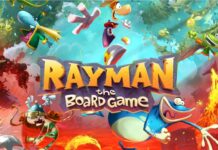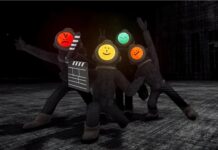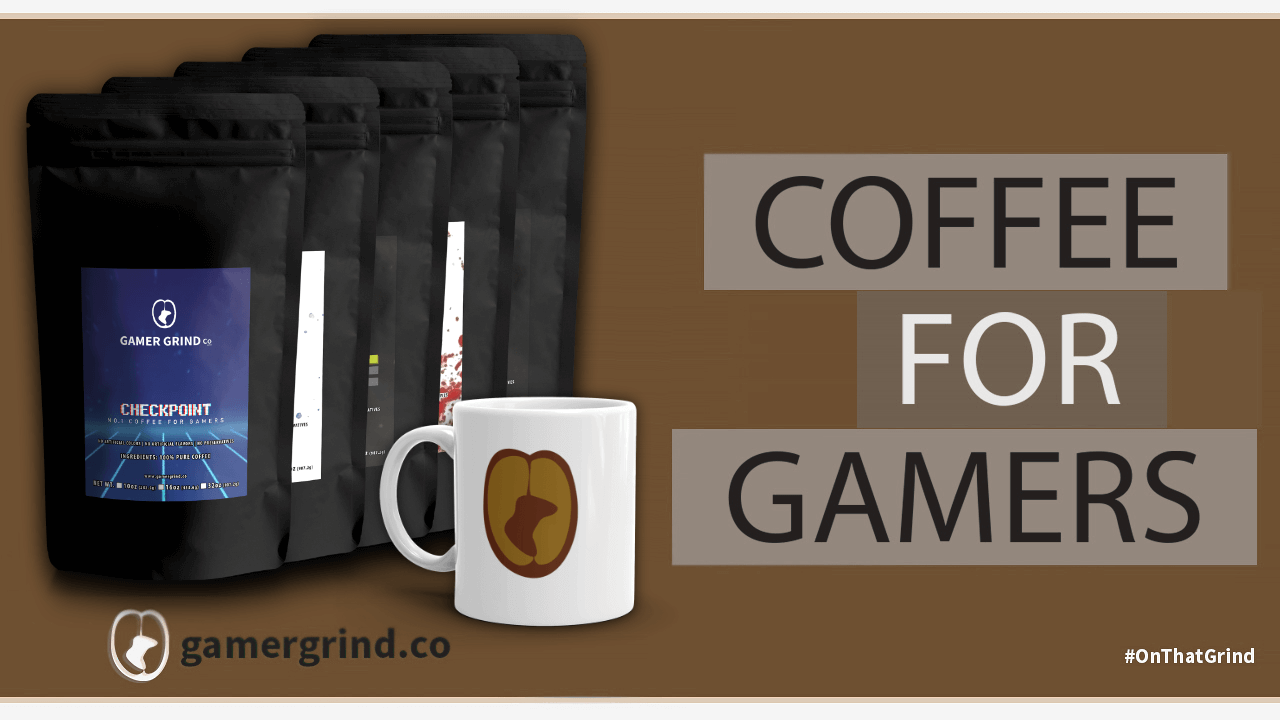Ten years have passed since Frictional Games’ seminal horror classic Amnesia: The Dark Descent traumatised the gaming world, and it’s been five since the release of its astonishing sci-fi horror Soma; finally, though, the Swedish studio makes its long-awaited return next week, this time revisiting its decade-old franchise with new series entry, Amnesia: Rebirth. Yet while that might initially feel like an unexpected regression, especially after the dazzling freshness of Soma, Frictional sees Rebirth as the latest evolutionary step in the studio’s journey – one it’s been on since its inception in 2007 – to create a very particular type of horror experience.
“The thing is,” explains Frictional’s co-founder and creative director Thomas Grip of the studio’s fascination with the genre, “in a shooter you shoot people, in a puzzler you puzzle things, and in a strategy game you strategise things, but there’s not really any activity that’s central to horror games… it’s the emotions that you evoke.
“I think that’s quite different from how you approach other genres and it adds so much more focus on how you structure narrative… and that’s a very interesting way of making games.”
It’s a development challenge Frictional has been attempting to perfect for over a decade now; however, since the acclaimed release of Soma – a game whose gut-wrenching moments of woozy existential terror lingered long after its unforgettable finale – the studio has focussed its ambitions still further, aiming to create narrative experiences that don’t just make players “think about things in a different way”, as Grip puts it, but, by carefully threading gameplay and story, makes them an “active force” in how events unfolds.
“In some ways,” explains Grip, “Amnesia: The Dark Descent was a newer and better version of Penumbra [the studio’s earlier horror title], and, in some ways, I even think Soma is a better version of Amnesia. One of my annoyances when doing Amnesia was that the player didn’t confront the things we wanted them to confront when we first made the designs. With Soma though we went all in and wanted people [to really] confront the thematics… but it also felt like the gameplay didn’t hang as tightly together as it should have with the themes we wanted.”
Rebirth, then, is essentially a culmination of all the studio’s learnings so far, and an attempt to address those perceived weaknesses with earlier games. “We’re trying to do what we did in Soma in terms of the overarching narrative,” says Grip, “but we’re trying to get back to better lower-level gameplay – which I feel we had in Amnesia – and then combining those two together to form a really coherent and nice package.”
“We’ve learned so much and gained so much confidence in doing Soma,” Grip continues, “that now I think we can really do it on a purer horror experience as well, and that’s what we’re sort of aiming for with Rebirth; there’s gonna be scares with monsters popping up from unexpected places and so on, but if everything goes as we want it to, that’s not what’s gonna keep you up at night. That’s gonna be the long-term effects of the journey throughout the game and the choices you end up making. That’s the thing that’s gonna be haunting you in the very end.”

Why, though, did Frictional feel the urge to return to the Amnesia universe, especially after the emboldening success of an entirely new, and refreshingly different setting, in Soma? “It’s two reasons,” explains Grip, “One is that after we released Soma, we never wanted to do another game that took five years to make – which we ended up doing anyway, but never mind – but we still wanted to improve, we still wanted to merge gameplay better with narrative, and we felt that if we could go back to Amnesia, that would be something that we had a lot of established things for. So it would be easier to have a go at a sequel and improve it and make that interesting, rather than just reinventing everything from scratch.
“But then on top of that, while the environment in The Dark Descent is actually pretty boring to render – it’s an old castle, there are some normal rooms, there are some cellar rooms, and that’s it, there’s just not a lot of variety – the lore of Amnesia has a tonne of environments. There are deserts, tombs, and all kinds of weird stuff, and it felt like it would be really cool if we could visit those places and have them finally not just being lines in the text. It just felt like we had a lot of unexplored lore to base it all around.”
Five years later and the studio’s continued experimentation with horror has resulted in Amnesia: Rebirth, a game that follows the harrowing journey of protagonist Tasi Trianon as she travels across the Algerian desert of the 1930s. It’s an unusual, ambitious setting – one that creative lead Fredrik Olsson calls “the biggest variation in environments we’ve had in any of our games” – not least because its brilliant light and wide open expanses seem completely antithetical to the traditional modes of horror.
Grip says the initial inspiration for Rebirth’s desert setting came from a book he was reading called Skeletons On The Zahara, which charts the real-life story of Captain James Riley and his crew in the early 19th century, after their ship became wrecked on the shore of the Sahara. “It’s really much a horror story,” explains Grip, “and I felt, well, wouldn’t it be cool to have a horror story set in the desert, because that’s fairly uncommon… but we sort of figured out the hard way that deserts are not so scary. We started making the first concepts, and, well, when you have a desert in front of you, it looks very much like a day on the beach. It’s not all that frightening.”
The solution, it turns out, was variety; “Rebirth doesn’t just take place in a desert,” says Grip, “it takes place in caves and other sorts of buildings that you can enter, but I really like that diversity. The desert is a really cool way of emphasising the contrasts that you go through; in one area of the game you squeeze through tight tunnels and then come out of an opening and you’re in the middle of this wide-open, endless desert. And that just makes the desert seem even bigger and more empty, and it makes these crawl spaces feel even more claustrophobic… that’s a really cool sort of juxtaposition to work with.”
“And there’s a difference between how you contextualise things,” continues Grip. “If you have a desert setting, and you just put the player there, it’s not very scary. But if you build a narrative where they’re alone, and they have to get out there because they’re dying, then just being in a desert and not seeing any kind of help in any direction, suddenly, it’s a scary place to be. So it depends a lot on how you build it all up. I think that’s an interesting part of the challenge.”

But while a desert might be something of a bold choice for a horror game, it’s a setting that, crucially, is immediately understandable – a valuable lesson Frictional learned while working on Soma’s relatively high-concept bio-mechanically infested water world.
“When we started making Soma,” explains Grip, “one thing I had in my head was, ‘Okay, we’re just gonna skip any kind of convention, we’re not going to do any tropes, let’s just go wild here’. But I remember seeing the first impressions from a friend… and he was like, ‘You know, I can’t really figure out what genre this game is because it starts here, and then there’s some weird thing there, and then it goes to that sort of environment.'”
“He didn’t talk at all about what he thought about the game,” recounts Grip, “he was just so confused where to place the game genre that he didn’t really get a good experience. And from that I was like, ‘Okay, shit, we actually have to pull back a bit on the weirdness, because otherwise that’s all that people are gonna talk about and think about’.
“And we had that same thing when we asked people, ‘What do you think about your situation as a robot in Soma?’, and they’d reply, ‘My situation as a robot?! Well, I was thinking about these weird air blimps that were flying all around!’. So you have to sort of ground things, and I think that tropes can be extremely important; in a dark castle, for instance, the player knows, ‘I’ve heard about these from ghost stories and if I suddenly woke up in the middle of the night with the wind blowing and rain on the windows, I would be fucking scared’. And then people can very easily relate to that situation, and you’ve got them hooked… they’re like ‘Oh, now I understand the concept of this environment, now I can start getting scared by it!’.
“So I think that some sense of familiarity is extremely important if you want to build a good horror experience. If you just go all out to crazy wild, it’s just gonna fly over [people’s heads].”

Understandably, Frictional remains keen to talk about Rebirth’s actual game experience in only the vaguest of terms ahead of release. “We’re really hoping that people will find this to be a very personal and kind of different experience,” explains Olsson, “and we don’t want to spoil it until people actually get their hands on the game”. However, fans of The Dark Descent should immediately feel at home with Rebirth, not least because it shares the Amnesia series’ DNA of, as Grip puts it, “isolation, striving towards an uncertain goal, and constantly not only fearing for your life but also trying to survive your own internal demons”.
“I think we had to have an amnesiac story too,” continues Grip, “so that’s sort of what we’re going for here as well; it’s going to start out with a bunch of mysteries, the player figuring out who they are and why they’re there, but then I think the story changes gear a bit and becomes more like what we had in Soma where the story is the gameplay.”
“I’m slightly annoyed by games where the story is, like, the notes you read,” Grip elaborates, “and I think the story should really be what you as the player are actually doing in the game. I don’t think that was a focus for the first Amnesia game very much, apart from, you know, running around and being scared by monsters, but now there’s a much bigger focus on the player character being an active force in how this story unfolds.”
That’s not to say series staples like monsters won’t be returning; mechanically, there are numerous similarities between The Dark Descent and Rebirth, from its focus on light manipulation to its sanity management. “I don’t think we’re going to do anything mind blowing on the mechanics side,” explains Olsson, “but rather it’s taking what worked and trying to improve it… with a twist and an evolution”.
Grip believes Rebirth’s strength comes from the studio constantly asking itself ‘Okay, what’s the most interesting thing that could happen now?’, and by focussing on contrast. “One issue I have with many other horror games is that they’re sort of like a one trick pony,” he explains, “They almost go at horror gaming like you would do a racing game. Like, if I do a racing game, I make the racing as fun as I can and then that’s going to sustain hundreds of hours of racing.
“But you really can’t do the same with a horror game, so one of the things we’ve been doing a lot is just thinking about different situations and making sure there are cycles of calm and cycles of intensity and thinking about it all from a high level standpoint. So there’s this constant variation on what you’re doing… we’re almost making a mini game for every single location… and that’s also why it’s taken so long damn long to make!”

One thing Rebirth won’t have on release, though, is anything like Soma’s post-launch Safe Mode, which optionally disabled monsters’ ability to kill players. When I ask how Safe Mode came about, Grip offers, “I think the bigger question is why was the game not like Safe Mode? [Initially], the fear of threat felt like an important immersive aspect of the game. Like, if a monster could run up to you and hit you in the face, the environment got a bit more real because it had consequences; you weren’t just working through this façade, this performance that was being played out as you moved along. But then as people started playing it, it was obvious there were a lot who really honestly would enjoy the game but had issues with the monsters.
“I think this is different from something like Dark Souls, where you’re like, ‘Oh, yeah, I would play it if the difficulty was lowered’, but in a sense the high difficulty is the game because it forces you to attack and play in a certain way. But Soma’s monsters, especially if the player was already immersed in the game, didn’t really add that much. So we could remove the threat of them and the sneaking, and for many people that improved the experience by removing their frustration and unnecessary annoyances”.
However, Grip sees Rebirth’s monsters as “much more integral to the story”, explaining why the studio has opted not to implement a Safe Mode this time around.

With Rebirth now complete and ready for release, I’m curious to know if Frictional feels like it’s finally satisfied its horror ambitions, and if the studio – which, these days, works to a two-project development cycle – might consider stepping into a new genre for future games. “I’d say that we moved away from horror a bit already with Soma” say Grips, “the horror bits in there were more like remnants from our pedigree with Amnesia that we felt, you know, we had to have. But now, in retrospect, we might have had an even better game if we’d let go of more of those aspects. And so no, totally, we’re not going to restrict ourselves to horror but I think that the way in which horror games are designed – which is that you focus on evoking certain emotions and discussing certain themes – is still going to be central to all our games”.
For now though, Amnesia: Rebirth – which comes to PS4 and PC on 20th October – is the culmination of over a decade of Frictional’s evolving efforts, but what does the studio hope players will take away from it all? Olsson responds, “I hope they’ll come out of it feeling like they’ve had a personal investment into this game, and with that feeling of having experienced something they’ve not experienced before”.
“I’m hoping people will see it as, like, a holistic experience,” adds Grip, “that they’ve gone through this, not just played a game but actually been on this long journey and become emotionally affected by the end of it. Hopefully, laying awake for at least a few nights before being able to sleep again.”
































